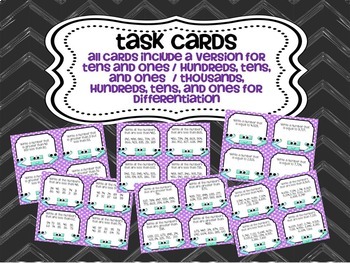
(Include groups with up to ten objects.)Ĭompare two numbers between 1 and 10 presented as written numerals. Identify whether the number of objects in one group is greater than, less than, or equal to the number of objects in another group, e.g., by using matching and counting strategies. Understand that each successive number name refers to a quantity thatĬount to answer “how many?” questions about as many as 20 things arranged in a line, a rectangular array, or a circle or as many as 10 things in a scattered configuration given a number from 1-20, count out that many objects. The number of objects is the same regardless of theirĪrrangement or the order in which they were counted.Ĭ. Understand that the last number name said tells the number of objectsĬounted. Number name with one and only one object.ī.

Pairing each object with one and only one number name and each When counting objects, say the number names in the standard order, Understand the relationship between numbers and quantities connect counting to cardinality.Ī. Represent a number of objects with a written numeral 0-20 (with 0 representing a count of no objects). Know number names and the count sequence.Ĭount forward beginning from a given number within the known sequence (instead of having to begin at 1). They use basic shapes and spatial reasoning to model objects in their environment and to construct more complex shapes. They identify, name, and describe basic two-dimensional shapes, such as squares, triangles, circles, rectangles, and hexagons, presented in a variety of ways (e.g., with different sizes and orientations), as well as three-dimensional shapes such as cubes, cones, cylinders, and spheres. Students describe their physical world using geometric ideas (e.g., shape, orientation, spatial relations) and vocabulary. (Kindergarten students should see addition and subtraction equations, and student writing of equations in kindergarten is encouraged, but it is not required.) Students choose, combine, and apply effective strategies for answering quantitative questions, including quickly recognizing the cardinalities of small sets of objects, counting and producing sets of given sizes, counting the number of objects in combined sets, or counting the number of objects that remain in a set after some are taken away.Ģ.

Students use numbers, including written numerals, to represent quantities and to solve quantitative problems, such as counting objects in a set counting out a given number of objects comparing sets or numerals and modeling simple joining and separating situations with sets of objects, or eventually with equations such as 5 + 2 = 7 and 7 – 2 = 5.

More learning time in Kindergarten should be devoted to number than to other topics.ġ. New Jersey Common Core Standards Alabama Courses of Study Alaska Content and Performance Standards Arizona's College and Career Ready Standards Arkansas Curriculum Frameworks California Content Standards Colorado Academic Standards (CAS) Common Core State Standards Connecticut Core Standards Delaware Standards and Instruction Florida Standards Georgia Standards of Excellence Hawaii Content and Performance Standards Idaho Content Standards Illinois Learning Standards Indiana Academic Standards Iowa Core Kansas Academic Standards Kentucky Academic Standards Louisiana Academic Standards Maine Learning Results Maryland College and Career-Ready Standards Maryland Standards Massachusetts Curriculum Frameworks Michigan Academic Standards Minnesota Academic Standards Mississippi College & Career Readiness Standards Missouri Learning Standards Montana Content Standards National STEM Standards Nebraska Core Academic Content Standards Nevada Academic Content Standards New Hampshire College and Career Ready Standards New Jersey Student Learning Standards New Mexico Content Standards New York State Learning Standards and Core Curriculum North Carolina Standard Course of Study North Dakota Academic Content Standards Ohio Learning Standards Oklahoma Academic Standards Oregon Academic Content Standards Pennsylvania Core and Academic Standards Rhode Island World-Class Standards South Carolina Standards & Learning South Dakota Content Standards Tennessee Academic Standards Texas Essential Knowledge and Skills (TEKS) U.S.In Kindergarten, instructional time should focus on two critical areas: (1) representing and comparing whole numbers, initially with sets of objects (2) describing shapes and space.


 0 kommentar(er)
0 kommentar(er)
